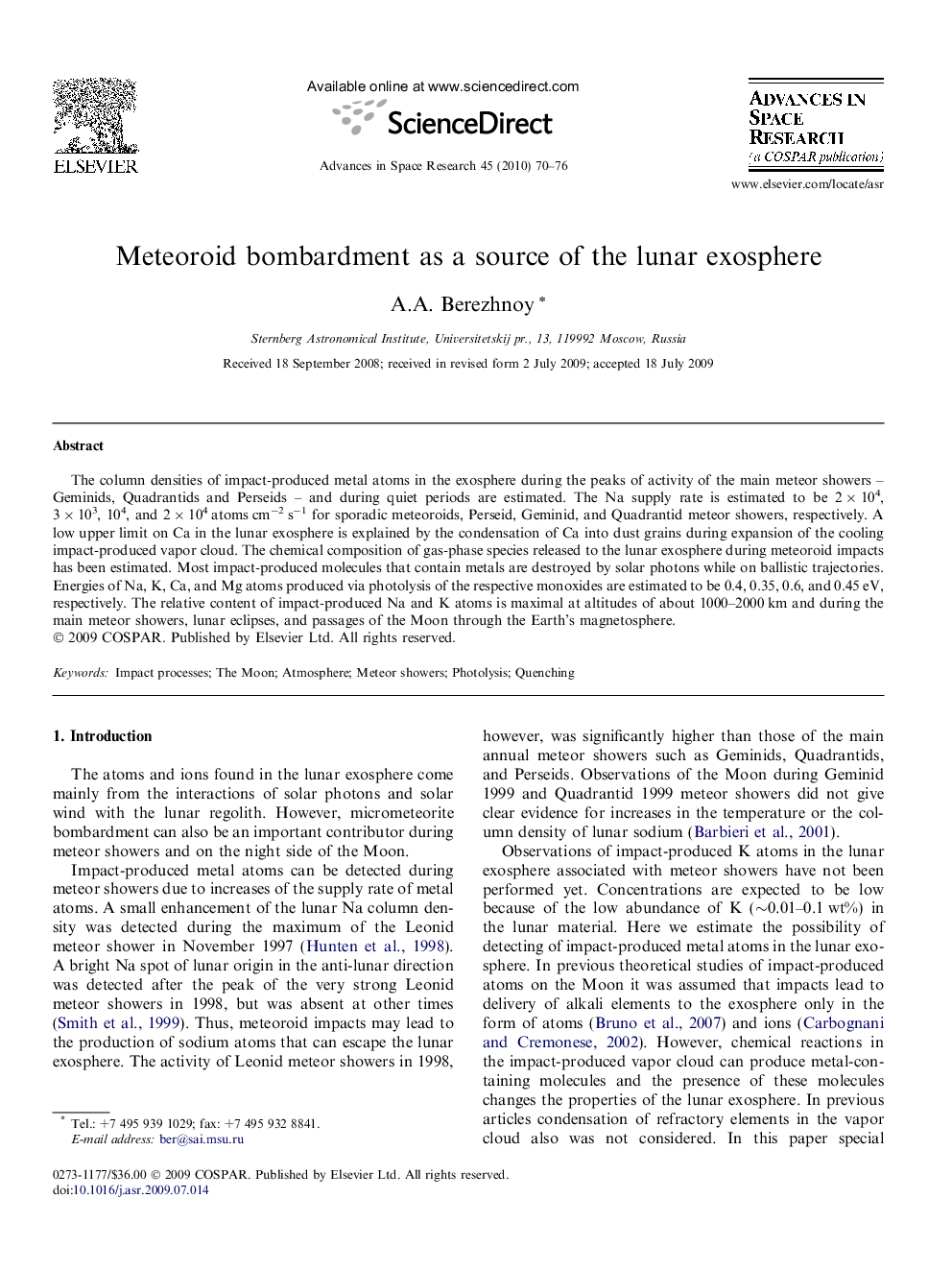| Article ID | Journal | Published Year | Pages | File Type |
|---|---|---|---|---|
| 1767785 | Advances in Space Research | 2010 | 7 Pages |
The column densities of impact-produced metal atoms in the exosphere during the peaks of activity of the main meteor showers – Geminids, Quadrantids and Perseids – and during quiet periods are estimated. The Na supply rate is estimated to be 2 × 104, 3 × 103, 104, and 2 × 104 atoms cm−2 s−1 for sporadic meteoroids, Perseid, Geminid, and Quadrantid meteor showers, respectively. A low upper limit on Ca in the lunar exosphere is explained by the condensation of Ca into dust grains during expansion of the cooling impact-produced vapor cloud. The chemical composition of gas-phase species released to the lunar exosphere during meteoroid impacts has been estimated. Most impact-produced molecules that contain metals are destroyed by solar photons while on ballistic trajectories. Energies of Na, K, Ca, and Mg atoms produced via photolysis of the respective monoxides are estimated to be 0.4, 0.35, 0.6, and 0.45 eV, respectively. The relative content of impact-produced Na and K atoms is maximal at altitudes of about 1000–2000 km and during the main meteor showers, lunar eclipses, and passages of the Moon through the Earth’s magnetosphere.
